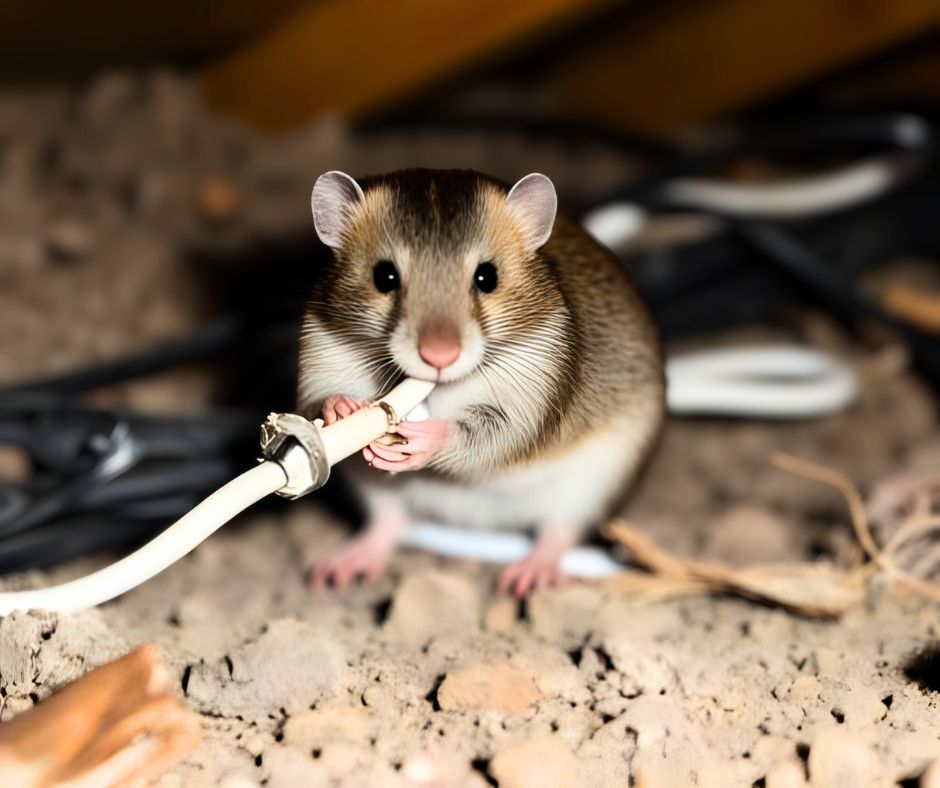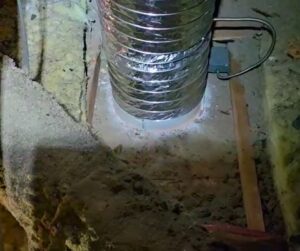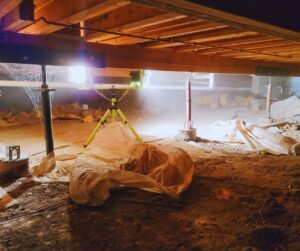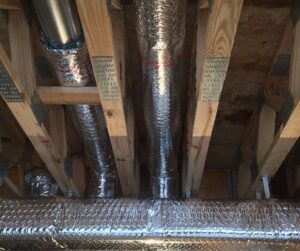At Miller Attics, we get phone calls every single week from frustrated homeowners asking us why is pest control so expensive. Someone just got quoted $800 for termite treatment, or they’re looking at a $75 monthly bill for general pest control, and they want to know if they’re being ripped off. Here’s what most pest control companies won’t tell you straight: the pricing is complicated, and there’s no one-size-fits-all answer. Let me break down the real questions you should be asking before you write that check.
Is Pest Control Worth It or Just a Waste of Money?
Pest control is worth it when you’re preventing serious damage or dealing with an active infestation, but not every home needs the same level of service. I’ve seen homeowners spend $600 a year on quarterly treatments when they could have handled their ant problem with a $40 DIY treatment. I’ve also seen someone skip professional help for what looked like “just a few termites” and end up with a $23,000 repair bill eighteen months later.
The question isn’t whether pest control has value—it clearly does. The question is whether the specific service being offered to you matches your actual risk level. A brand-new home in a well-maintained neighborhood with no pest history probably doesn’t need monthly treatments. An older home backing up to undeveloped land in California might absolutely need quarterly professional service. The pest control industry makes a lot of money selling preventative plans to people who don’t really need them, but they also save homeowners from catastrophic damage when done right.
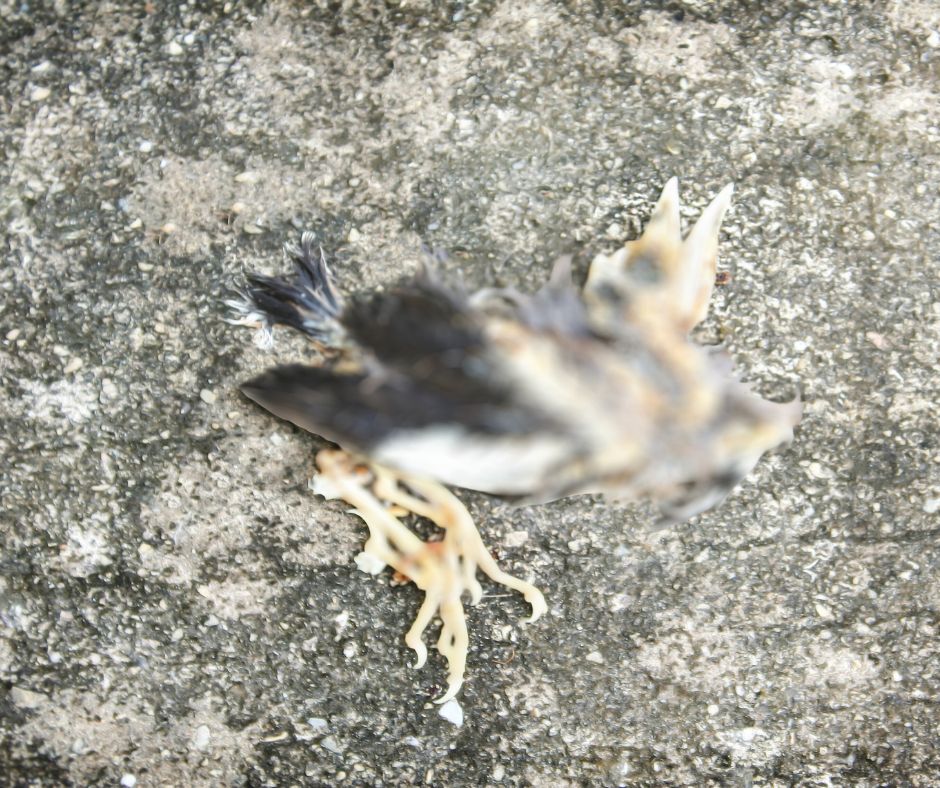
When Do I Need One-Time Treatment Versus Ongoing Service?
Go with one-time treatment when you have a specific problem you can identify and solve, but choose ongoing service when you’re dealing with persistent pests or high-risk conditions. One-time treatments run $150-400 and work great for isolated incidents. You spot mice, the technician finds their entry point, seals it up, sets traps, and you’re done. Problem solved.
Ongoing service—whether monthly at $40-70 or quarterly at $100-130 per visit—makes sense when pests keep coming back or when your property is naturally attractive to them. Here’s the reality: in California, especially Southern California, the climate means pests are active year-round. If you’re seeing ants every single spring, roaches in summer, and spiders in fall, you’re fighting a losing battle doing one-time treatments. But if you go three years without seeing a bug? Don’t let a salesperson scare you into a contract.
The pest control companies make more money on recurring contracts, obviously. So they push them hard. That doesn’t mean they’re wrong—recurring service often prevents problems before they start. It just means you need to honestly assess whether your home needs it. Why is pest control so expensive? Partly because they’re selling you a year-round plan when you might only need two treatments.
How Often Do I Really Need Service—Monthly or Quarterly?
For most California homes, quarterly service is sufficient, but monthly service makes sense in high-pest-pressure areas or during active infestations. This is one of the biggest pricing debates we hear. A monthly plan costs roughly $500-840 per year. Quarterly runs $400-520 per year. The companies offering monthly service say you need constant protection. The companies offering quarterly say that’s overkill.
Here’s what actually happens: most pesticides used in modern treatments last 60-90 days. A monthly visit means they’re retreating before the previous treatment has worn off. For general pest control—ants, spiders, roaches—that’s usually unnecessary. Quarterly lines up with seasonal pest activity changes. Spring treatments before ants wake up, summer for roaches, fall for spiders trying to get indoors, winter for rodents seeking warmth.
But there are exceptions. If you’ve got a serious German cockroach problem, monthly visits might be needed until it’s under control. If your home backs up to a field full of rodents, more frequent monitoring makes sense. If you’re in an area with high termite pressure, quarterly inspections protect your biggest investment. The key question: is the company recommending monthly because your situation requires it, or because their sales quota requires it?

Why Are Big Companies Like Terminix More Expensive Than Local Pest Control?
National franchise pest control companies charge 30-50% more than local companies due to overhead costs, marketing expenses, and franchise fees that smaller operations don’t have. Terminix or Orkin might quote you $700-800 annually for the same service a local company offers at $400-500. Both are licensed, both use similar products, both have trained technicians.
So what are you paying for with the big names? Brand recognition, national warranties that transfer if you move, extensive customer service infrastructure, and honestly, heavy advertising costs. Those TV commercials aren’t free. The local company operates from a home office with three trucks, minimal overhead, and the owner often does the treatments personally. The national company has regional offices, fleet maintenance costs, call centers, and layers of management.
Does that mean local is always better? Not necessarily. The big companies have more resources for difficult problems, better training programs, and you’re not dependent on one person’s schedule. But for routine pest control, that local company charging $35-50 per monthly visit instead of $60-75? They’re probably giving you the exact same service. Why is pest control so expensive with the big names? Because you’re paying for infrastructure you might not need.
Can I Just Do This Myself and Get the Same Results?
DIY pest control costs $100-300 annually for materials but requires time, knowledge, and consistent application that many homeowners struggle to maintain long-term. I’m going to be honest here: for basic pest prevention, yes, you can absolutely do it yourself. We’ve had customers who buy professional-grade products online, follow the instructions carefully, and maintain pest-free homes for years. The materials aren’t that complicated.
The store-bought products at Home Depot are weaker than professional formulations, that’s true. But you can order professional-grade chemicals online legally—the same brands we use. A bottle of concentrate that makes 20 gallons costs $40-60 and lasts a year. You need a $30 sprayer. Watch some YouTube videos on proper application. Total cost: under $100 for a year’s worth of treatments.
But here’s where it falls apart for most people: consistency. You need to treat every 90 days, not when you remember. You need to spray the right areas in the right amounts. You need to identify what pest you’re dealing with and use the correct product. When we get calls from “failed DIY” situations, it’s usually because someone sprayed once, saw bugs again three months later, and gave up. Or they used the wrong chemical for the pest type. Professional service is partly about the chemicals, but it’s mostly about knowledge and consistency.
Is pest control worth it when you could DIY? That depends on your schedule, your willingness to learn, and your ability to stick to a treatment schedule. If you work 60 hours a week and can’t remember to change your HVAC filter, professional service is worth every penny.
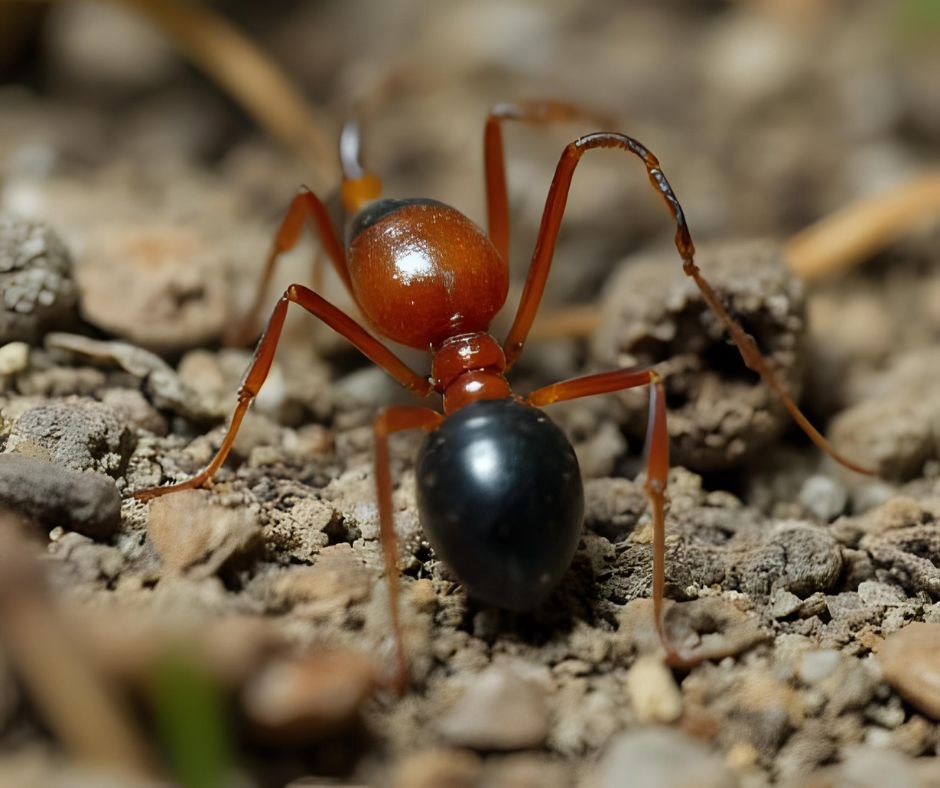
Why Do Professional Chemicals Cost More—Are They Really Better?
Professional-grade pesticides are stronger, longer-lasting, and more specifically targeted than consumer products, but the price difference reflects restricted availability and licensing requirements as much as actual effectiveness. A professional can buy a gallon of concentrate that treats 100,000 square feet for $200. You can’t buy that product legally without a license. You can buy a consumer version that’s 25% as concentrated for $50 that treats maybe 5,000 square feet.
The professional products are definitely better. They’re formulated to last longer, they bond better to surfaces, and they’re designed to target specific pests more effectively. Professionals also have access to products you literally cannot buy—restricted-use pesticides that require special certification. For certain pests like bed bugs or termites, the professional chemicals are dramatically more effective.
But the pest control industry also benefits from this mystique around their “secret” products. For common ants and spiders, the difference between professional concentrate and good consumer products is maybe 20-30% in effectiveness. Is that worth paying $600 more per year? Depends on your situation and tolerance for pests. Why is pest control so expensive? Partly because they’re using products you can’t access, which eliminates your ability to comparison shop.
What Do Free Inspections Really Include?
Most “free” pest inspections are actually sales calls where technicians identify problems and quote solutions, while paid inspections provide unbiased assessments without pressure to sign contracts. This is a huge source of confusion. Every major company advertises “free inspections.” Terminix will come to your house for free. So will Orkin, and so will that local company.
But what are you getting? In most cases, you’re getting a salesperson who walks your property for 15-20 minutes, finds some conducive conditions (which exist at every house), and then sits you down with a quote. That’s not really an inspection—it’s a sales process disguised as an inspection. They’re incentivized to find problems and sell you service.
A real inspection, the kind you pay $75-150 for, is different. The inspector has no commission riding on whether you buy treatment. They use moisture meters, infrared cameras for termites, they crawl your attic and under your house, and they give you a detailed written report of what they found. They tell you what’s urgent, what’s not, and what you can handle yourself.
When should you pay for an inspection? When you’re buying a house, when you’ve seen evidence of termites, or when you want an honest second opinion on a quote that seems high. The free inspection is fine if you’re ready to hire someone and just want to compare prices between companies. Just understand what you’re getting—and what you’re not.
Why Does Termite Treatment Cost $800-$3,000 When Ant Treatment Is $150?
Termite treatment costs more because it requires specialized equipment, extensive labor, large volumes of chemicals, and typically includes multi-year warranties covering both retreatment and damage repair. An ant treatment takes 30 minutes and a quart of chemical. A termite treatment can take a full day, require drilling holes in your foundation, pumping 100+ gallons of termiticide into the soil, and installing monitoring stations around your property.
The equipment alone is expensive. The drill rig, the injection equipment, the safety gear—most pest companies have $10,000-20,000 invested just in termite treatment equipment. The chemicals are more expensive too. Termiticide costs $200-300 per gallon wholesale. You need 50-100 gallons for an average home treatment. The labor is specialized—not every pest tech can do termite work. They need additional training and certification.
But here’s the bigger reason: liability. When a company treats for termites, they’re usually providing a warranty that covers up to $1,000,000 in damage if termites return during the warranty period. That’s enormous liability. They’re pricing in that risk. Is pest control worth it for termites? Absolutely, if you have them. Termite damage in California averages $8,000-12,000 before homeowners even notice it. Prevention or early treatment at $1,500 looks pretty reasonable compared to that.
Why Is Bed Bug Treatment the Most Expensive of All?
Bed bug extermination costs $500-$5,500 because it requires multiple visits, extreme temperature treatments or intensive chemical applications, and extensive preparation work from the homeowner that other pest treatments don’t need. We’re talking about the most difficult pest to eliminate. A single bed bug treatment visit might run $300-500 per room, and you typically need 2-4 treatments spaced weeks apart.
The expensive treatments use heat—bringing your home or room to 140°F for several hours to kill all life stages of bed bugs. That requires industrial heaters, extensive setup, and a full day of work. A whole-house heat treatment runs $2,000-5,000. Chemical treatments are cheaper per visit but less reliable, so you need more of them. Some companies now use freezing treatments. All of these methods require specialized training and equipment.
Then there’s the preparation. You have to bag all your clothes, strip your bedding, pull furniture away from walls, remove clutter—hours of work before the technician even arrives. Many treatments fail because homeowners don’t prep properly or because one pregnant bed bug survives and restarts the colony three months later. The companies are pricing in the high failure rate and the callback visits. Why is pest control so expensive for bed bugs? Because they’re incredibly hard to kill, and the consequences of failure are returning to a nightmare situation.
Why Do Rodent Treatments Cost More Than Insect Treatments?
Rodent control costs $150-500+ because it requires physical exclusion work, trap placement and monitoring, cleanup of contamination, and multiple follow-up visits that insect treatments don’t need. Spraying for ants is straightforward—apply chemical barrier, pests die, done. Mice and rats are mammals. You can’t just spray poison around and call it solved (well, you can, but it’s not effective or safe).
Proper rodent control means finding every entry point—and mice can squeeze through a hole the size of a dime. That means crawling your entire attic, inspecting your foundation, checking roof lines, looking at garage doors and utility penetrations. Then you need to seal those entry points with materials rodents can’t chew through. That’s physical labor with steel wool, metal flashing, and concrete. Then you set traps in strategic locations based on rodent behavior patterns.
But you’re not done. Someone needs to come back every few days to check traps, remove dead rodents, and reset. Then there’s the cleanup—rodent droppings carry disease, and most homeowners want that contamination removed and sanitized. Some situations require attic insulation replacement if it’s been destroyed by nesting. A complete rodent job might involve 5-6 visits over several weeks. Is pest control worth it for rodents? Usually yes, because the alternative is living with disease-carrying pests that reproduce quickly and cause structural damage.
What Are Licensing, Insurance, and Training Really Adding to My Bill?
Pest control licensing, insurance, and ongoing training add approximately $15-25 per visit to your cost, but these requirements ensure technicians are qualified to safely use restricted pesticides around your family and property. Every pest control technician in California needs a state license. Getting that license requires passing exams that cost $200+, completing 40+ hours of training, and paying annual renewal fees. Insurance for a pest control business runs $3,000-8,000 per year for basic liability coverage of $100,000-300,000.
Continuing education is required annually—technicians need to take courses on new products, updated safety protocols, and changing regulations. The company pays for this training. Good companies invest heavily in their technicians’ education. That’s not free—it’s built into your service price. When you hire an unlicensed guy off Craigslist for $50, you’re saving money by skipping all of these safety nets.
Is it worth the extra cost? Ask yourself: do you want someone spraying chemicals in your home who hasn’t been trained on proper application rates, safety protocols, or what to do if your child or pet gets exposed? The licensing requirements exist because pesticides can be dangerous when misused. Why is pest control so expensive with licensed companies? Because they’re following regulations designed to protect you, and compliance costs money.
What Hidden Fees Should I Watch Out For?
Initial setup fees ($100-300), cancellation charges ($150-250), re-treatment costs for pests “not covered” by your plan, and travel fees for remote properties are the most common hidden costs in pest control contracts. This is where homeowners get burned. You sign up for “$49 per month” and then the first bill is $349 because of an “initial treatment fee” nobody mentioned. Or you want to cancel after three months and discover you owe $200 because you’re “breaking the annual agreement.”
Read the fine print before signing anything. Ask specifically: What does this initial fee cover that future treatments don’t? If I need a callback between scheduled visits, is that free? What pests are excluded from the plan? (Many “general pest” plans don’t cover rodents, termites, or bed bugs—the expensive problems.) If I move or want to cancel, what do I owe? Can you waive the cancellation fee under any circumstances?
Some companies charge extra for treating second stories or hard-to-reach areas. Some charge “fuel surcharges” if you’re more than 30 miles from their office. Some charge extra for treating inside your home versus just the perimeter. Get everything in writing. The honest companies will give you a clear, itemized quote. The shady ones will try to confuse you with package deals and promotional pricing that obscures the real cost. Is pest control worth it when hidden fees can double the price? Only if you know the total real cost upfront.
Should I Pay More Now to Prevent Damage Later?
Preventative pest control costs $300-900 annually but can save you $3,000-30,000 in termite or rodent damage repairs, making it worthwhile for high-risk properties but potentially unnecessary for low-risk homes. This is the core value proposition the industry sells. They tell you horror stories about termites eating floor joists, rodents chewing electrical wires and starting fires, carpenter ants destroying decks.
Those horror stories are real—I’ve seen them personally. But they’re also not as common as the marketing suggests. The question is: what’s your actual risk level? If you’re in a neighborhood where every house has had termites, your risk is high. If you’re in a newer development with no pest history, your risk is lower. If you’ve got wood-to-ground contact around your foundation, your termite risk is high. If your home is properly built with appropriate clearances, your risk is lower.
Here’s how I think about it: if you’re in a high-risk situation (older home, California termite zones, previous pest history, lots of landscaping close to the house, nearby undeveloped land), then spending $500-700 per year on prevention makes financial sense. You’re buying peace of mind and avoiding the 20-30% chance of a $10,000 problem. But if you’re low-risk, that same $500 per year over 10 years is $5,000 spent to prevent a problem that might never happen. Why is pest control so expensive relative to your actual risk? Because they charge everyone the same regardless of their true risk level.
Do New Homes Need Pest Control or Can I Wait?
New homes benefit from immediate preventative pest control because construction attracts pests, and establishing a pest-free environment from day one is easier than eliminating an established infestation later. The pest control sales pitch for new construction is that you should start service immediately. They argue that disturbed soil, wood debris, and construction activity attract pests, so you need to create a protective barrier right away.
There’s some truth to that. Construction does disturb pest populations. Termites in particular can discover your new lumber during the building phase. Many builders in California actually require termite pre-treatment before pouring the foundation—that’s usually good for 5-10 years. But the idea that you need monthly general pest service from day one? That’s more about getting you locked into a contract than genuine need.
Here’s what I recommend: Have a good inspection 6-12 months after moving into a new home. See what shows up. New construction should be relatively pest-free if it was built properly—good seals, proper flashing, adequate clearances. If you’re seeing problems right away, that’s usually a construction defect (gaps, poor grading, wood-to-ground contact) that needs fixing, not ongoing chemical treatment. Is pest control worth it immediately in a new home? Usually not for general pests. But termite inspection and treatment? That’s worth considering given California’s termite pressure.
Are California Pest Control Prices Inflated Because of Cost of Living?
California pest control costs 20-40% more than national averages due to higher labor costs, stricter regulations requiring more training and certification, and increased insurance requirements, but prices vary dramatically between coastal and inland areas. In Los Angeles or San Francisco, you’ll pay $60-80 for a monthly visit that costs $40-50 in Sacramento or Fresno. Labor is the biggest factor—pest technicians in coastal California earn $20-25 per hour compared to $15-18 in other states. Benefits, insurance, and taxes on that labor are all proportionally higher.
California’s regulatory environment is also more stringent. The state requires more training hours, more detailed reporting, and more frequent re-certification than most states. Those compliance costs get passed to customers. Liability insurance costs more in California because everything costs more—if a company causes damage to your property, the repair costs are higher, so the insurance premiums reflect that.
But here’s where it gets interesting: prices within California vary wildly. The San Fernando Valley might have three companies all charging $70-80 monthly. Drive 40 miles inland to Palmdale, and you’ll find companies charging $45-55 for identical service. Why? Because they’re competing on price rather than brand, and their overhead is lower. Why is pest control so expensive in California? Partly legitimate cost-of-living factors, but also because companies charge what the market will bear. In wealthy coastal areas, they charge more because they can.
The Bottom Line on Pest Control Pricing
Why is pest control so expensive? Because it combines skilled labor, specialized chemicals, liability costs, regulatory compliance, and ongoing service—but the real cost should match your specific risk level and needs. We’ve seen homeowners overpay by thousands over the years for services they didn’t need. We’ve also seen people try to save money on DIY and end up with catastrophic damage.
The honest answer is that pest control is expensive relative to other home maintenance because pests can cause serious damage and the treatments require professional products and knowledge. But it’s not equally necessary for every home, and the pricing varies wildly based more on company business models than on actual service differences.
At Miller Attics, we start every pest control conversation with questions, not quotes. What pests have you actually seen? How often? Where on your property? What’s your home construction like? What’s your risk tolerance? Only then can we tell you whether you need monthly service, quarterly service, a one-time treatment, or just some advice on sealing entry points and improving sanitation.
Is pest control worth it? Absolutely—when it’s the right service at the right frequency for your specific situation. Get multiple quotes, ask detailed questions about what’s included, read the contract carefully, and choose a company that’s transparent about costs and honest about what you actually need. The couple hundred dollars for a thorough inspection might save you thousands by helping you avoid both pest damage and unnecessary treatments you don’t need.

